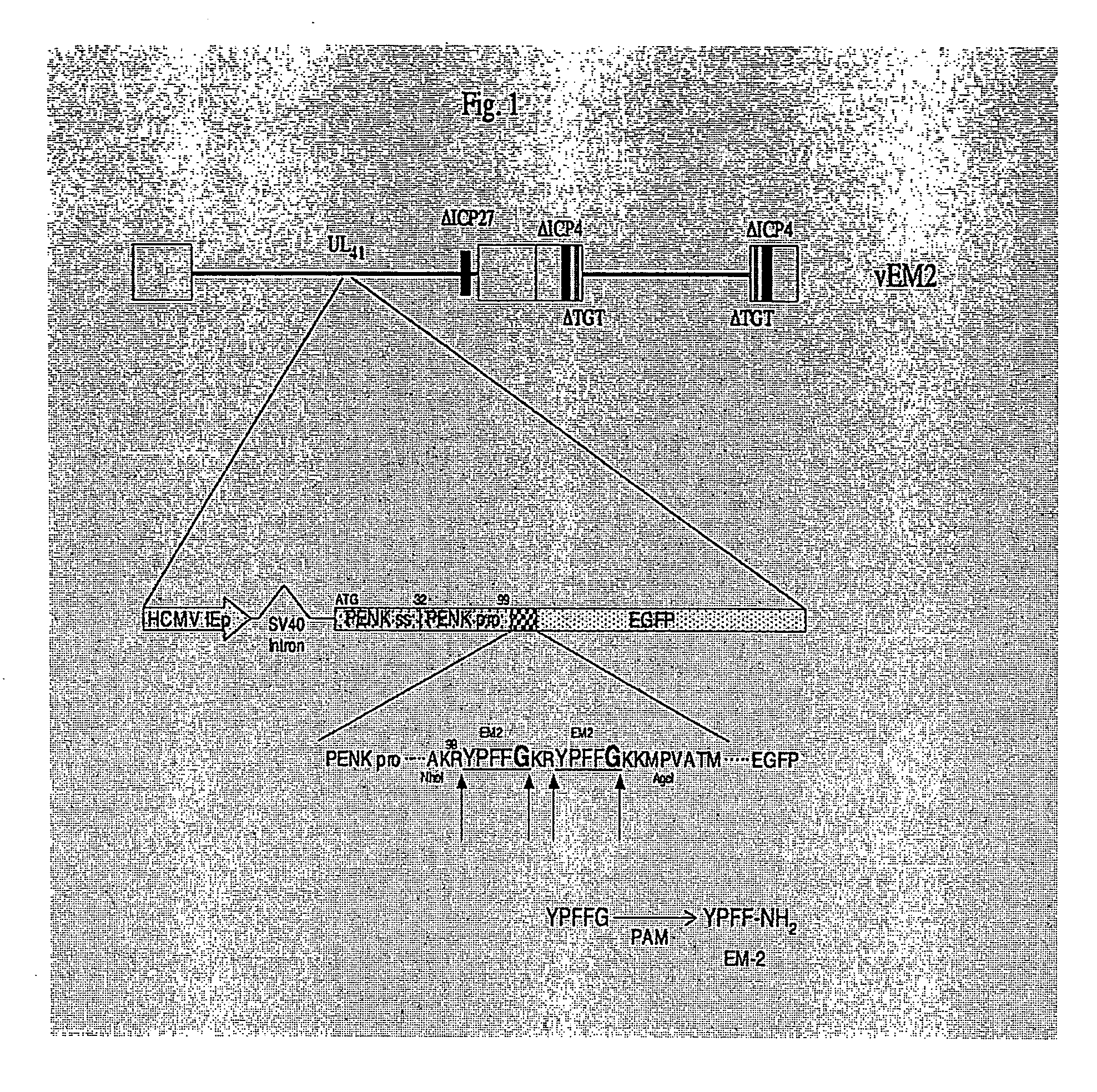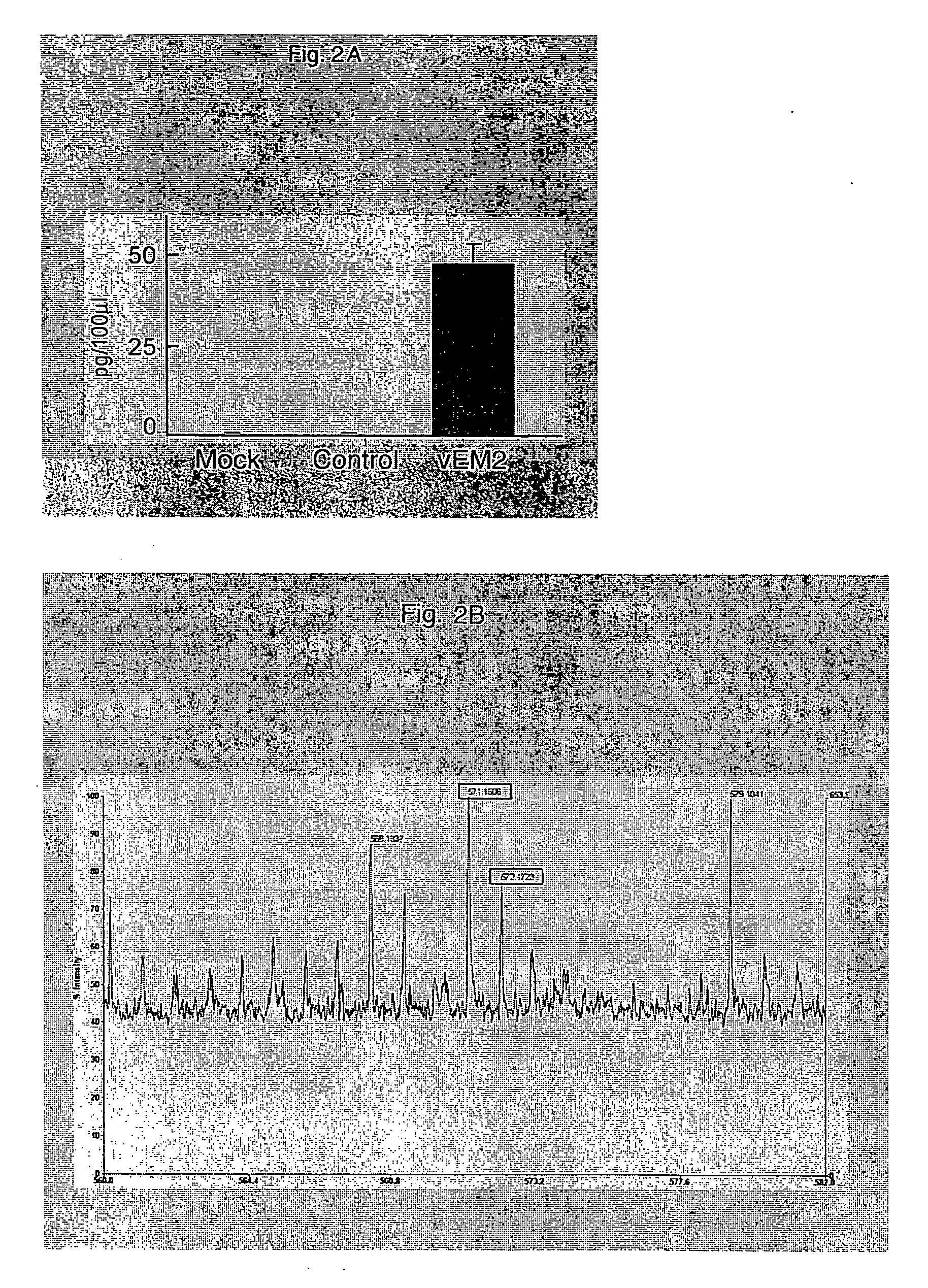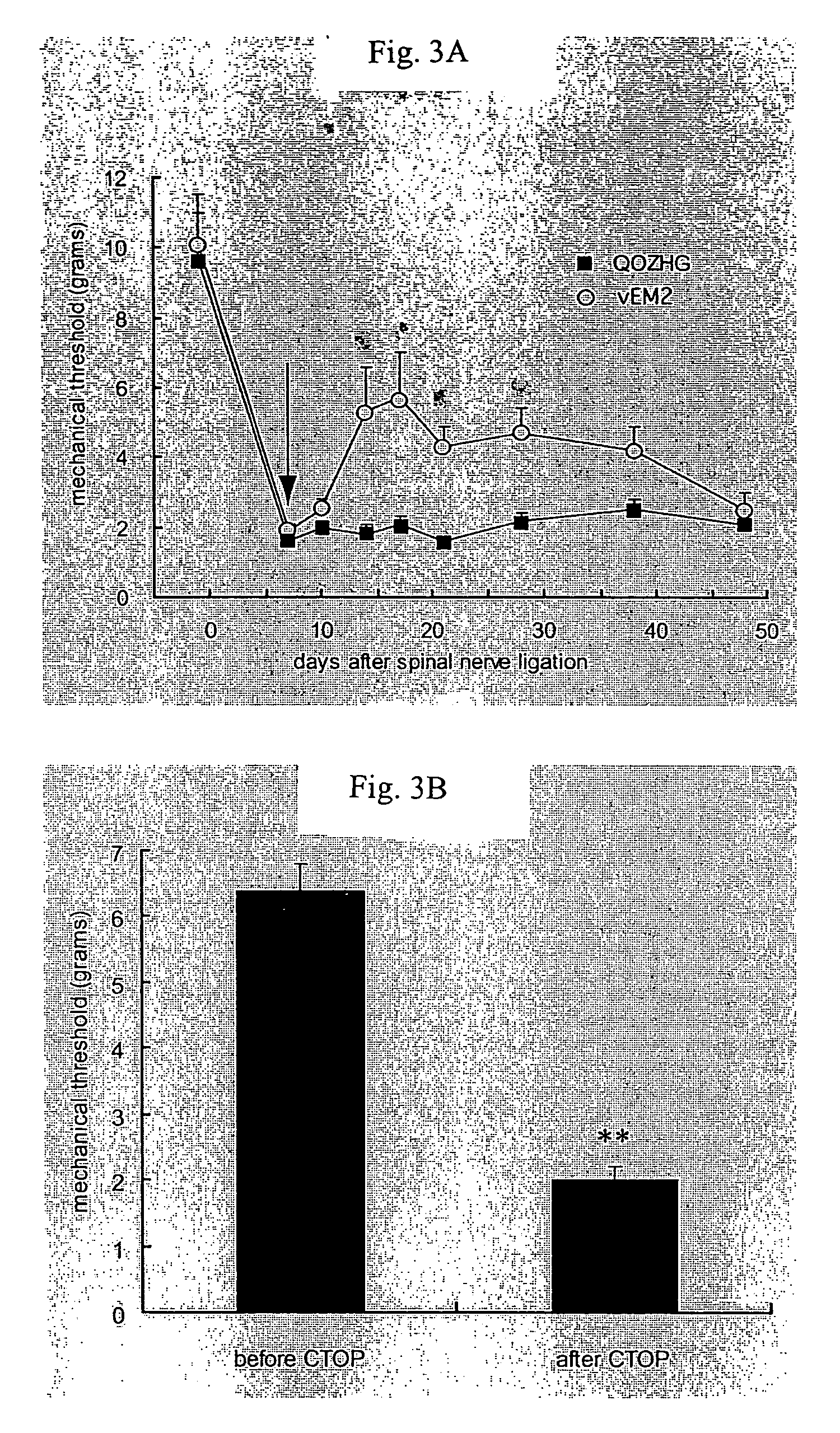Method of amidated peptide biosynthesis and delivery in vivo: endomorphin-2 for pain therapy
a technology of amidated peptides and endomorphins, which is applied in the introduction of peptides/proteins, vector-based foreign materials, viruses, etc., can solve the problems of limited production and use of endomorphins, and limited clinical utility of opioid drugs
- Summary
- Abstract
- Description
- Claims
- Application Information
AI Technical Summary
Benefits of technology
Problems solved by technology
Method used
Image
Examples
example 1
[0051] This example demonstrates the construction of the vEM2 vector.
[0052] An EM-2-EGFP cassette was cloned in a multistep strategy starting with plasmid pEGFP-N1(Clonetech, Mountian View, Calif.). The Bg1II and BamHI sites of pEGFP-N1 were collapsed using their compatible cohesiveness that also removes the majority of the multi-cloning site. The AseI site was converted into a BglII site by ligation of a BglII linker and the SspII sites were similarly converted into a BglII site. Subsequently, the SnaBI to NheI fragment from plasmid pCMVhPPE containing the SV40 intron and human PPE signal sequence was cloned into the SnaBI to NheI sites(37). The annealed oligonucleitides End2NheAgeU (CTAGCCAAAAGGTACCCGTTCTTCGGCAAAAGGTACCCGTTCTTCGGGAAGAAA ATG (SEQ ID NO:9)) and End2NheAgeL (CCGGCATTTTCTTCCCGAAGAACGGGTACCTTTTGCCGAAGAACGGGTACCTTTT GG (SEQ ID NO:10)) coding for a double EM-2 moiety were cloned between the unique NheI and AgeI sites fusing the PPE, EM-2, and EGFP coding regions in fram...
example 2
[0054] This example demonstrates the ability of vEM2 to produce, process, and secrete EM-2 in vitro. Studies to detect and confirm the identity of EM-2 were carried out using vEM2 or control (QOZHG) vector-transduced primary rat dorsal root ganglia (DRG) cultures(40).
[0055] Production of EM-2 was assayed by transducing primary rat dorsal root ganglia (DRG) cultures with vEM2 or control virus, QOZHG, at one plaque forming unit (PFU) / cell or mock transduced for one hour followed by media change. Transduced DRGs were incubated 37° C. / 5% CO2 for 24 hours when culture media was replaced with secretion stimulation buffer (85mM NaCl, 60 mM KCl). Following 15 minutes of stimulation, buffer was collected, centrifuged and 100 μl subjected to HPLC. HPLC was performed with a Vydac C18 column with a linear gradient of mobile phases 0. 1% trifluoroacetic acid (TFA) in water and 0.085% TFA in acetonitrile. To identify the EM-2 fraction, an EM-2 standard (100 μM, Phoenix Pharmaceuticals, Belmont, ...
example 3
[0057] This example demonstrates the in vivo efficacy of gene-based EM-2 delivery in a model of neuropathic pain, specifically a spinal nerve ligation model. The spinal nerve ligation model was utilized to produce mechanical allodynia and thermal hyperalgesia, hallmarks of neuropathic pain(41).
[0058] Male Sprague-Dawley rats weighing 225 to 250 g underwent selective L5 SNL with the approval of the University Committee on Use and Care of Animals(53). Under isoflurane anesthesia, an incision was made in the atlanto-occipital membrane, a polyethylene (PE-10) catheter, filled with 0.9% saline, was advanced 8.5 cm caudally to position its tip at the level of the lumbar enlargement. The rostral tip of the catheter was passed subcutaneously, externalized on top of the skull, and sealed with a stainless-steel plug. One week after implantation of the intrathecal catheter, L5 spinal nerve ligation (SNL) was performed. One week after SNL, 30 μl of vector (either vEM2 or QOZHG, 4×108 plaque-fo...
PUM
| Property | Measurement | Unit |
|---|---|---|
| affinity | aaaaa | aaaaa |
| Fluorescent | aaaaa | aaaaa |
| HPLC | aaaaa | aaaaa |
Abstract
Description
Claims
Application Information
 Login to View More
Login to View More - R&D
- Intellectual Property
- Life Sciences
- Materials
- Tech Scout
- Unparalleled Data Quality
- Higher Quality Content
- 60% Fewer Hallucinations
Browse by: Latest US Patents, China's latest patents, Technical Efficacy Thesaurus, Application Domain, Technology Topic, Popular Technical Reports.
© 2025 PatSnap. All rights reserved.Legal|Privacy policy|Modern Slavery Act Transparency Statement|Sitemap|About US| Contact US: help@patsnap.com



